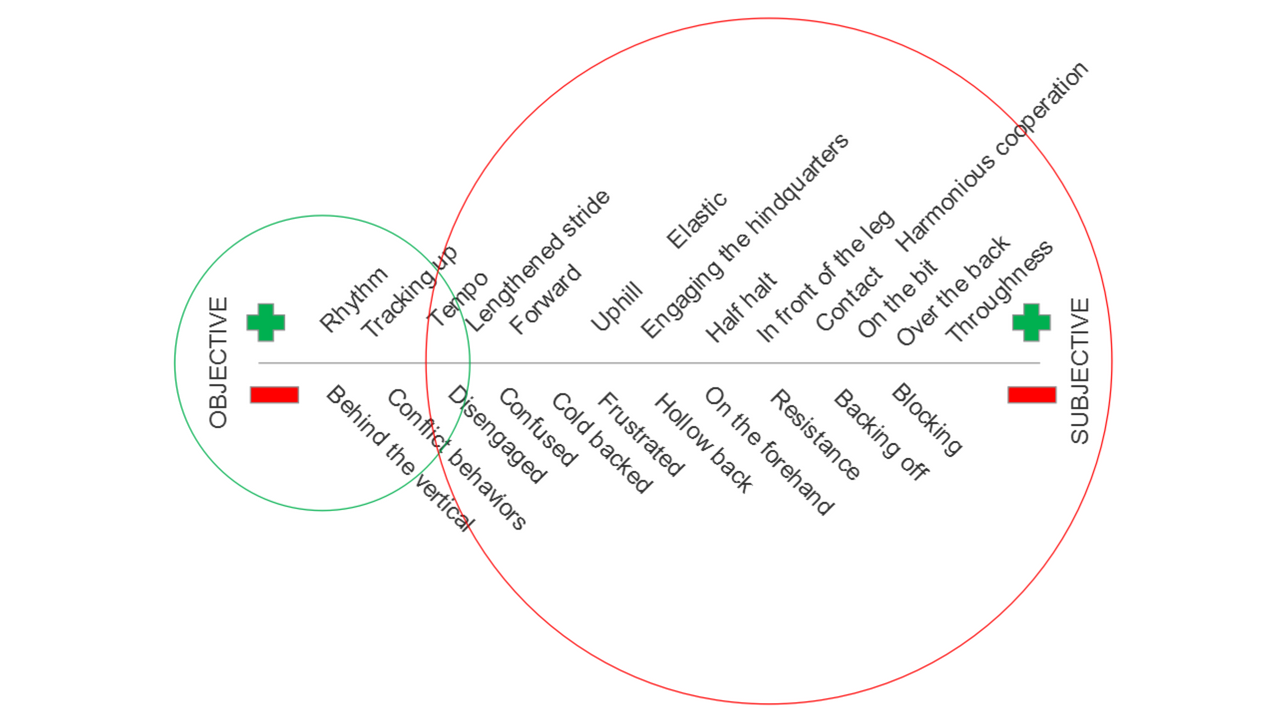
Having worked out that we need to use language that is based on our understanding of the horse's natural behaviour and cognitive abilities, I then began to look at the objectivity of the terminology and how universally it was understood.
The diagram shows terms taken from a dressage coaching manual. I have not yet attempted to order them from objective to subjective and if you'd like to have some input into that process, I'd appreciate that! Indeed, if you have some more terms, please do forward them to me - I think this line is going to be a long one!
I also think it's a very important continuum. If we're really going to work to improve horse welfare then we need to be discussing things we can measure and we all need to be talking about the same thing.
Take 'behind the vertical' for example. There is a new tool out (in fact it's so new, it's not quite out but I heard about it on the grapevine) that can tell the rider when the horse falls behind the vertical. Wow, how fabulous.
Rein tension can be accurately measured and these devices have been around for many years. Now they even come with a smartphone display, it really couldn't be easier. But talking about rein tension, where I can tell you in newtons how much tension I hold on the rein, is a far cry from talking about 'contact'. A good contact for you or me might be 4n and it's probably 104n for some top dressage riders.
Ask ten different people what a half-halt is and you'll get ten different answers. The same goes for 'on the bit', 'over the back' and 'through from behind'. Most of these expressions are a 'feel' or a 'look' and they probably could be measured, given video motion-analysis, but they don't even seem to be rewarded at high-level dressage - just look back at the Blu Hors test (Day 50), she's neither 'over the back' or 'through from behind', at least not by MY definition (which, of course, might be completely different to yours!).
Of course, it doesn't mean that the terms are necessarily bad, I think we just need definitions of them so that they are clear in our minds before we start teaching them to our horses or, as coaches, to our riders. Ever since feeling like I was in a game of Twister when asking a horse to do a simple shoulder-in down the long side with an instructor shouting "left foot here, right hand there, right leg on the girth....no, no, no..." I have thought that if it isn't crystal clear in my mind then I can never get the horse to understand it. After all, we aren't really asking our horses to do anything difficult, even at very high levels - we are simply moving the feet at different speeds, directions and distances. Simple.
How about we work on this Kandoo Continuum together. You send me in your expressions or words, whether they go on the top (positive) or the bottom (negative) side of the line and where you think they should sit. I'll update the continuum from time to time and we'll see what we can come up with.
Leave me a comment below with your additions, changes or suggestions.
If you'd like this series delivered directly to your inbox, click here.

